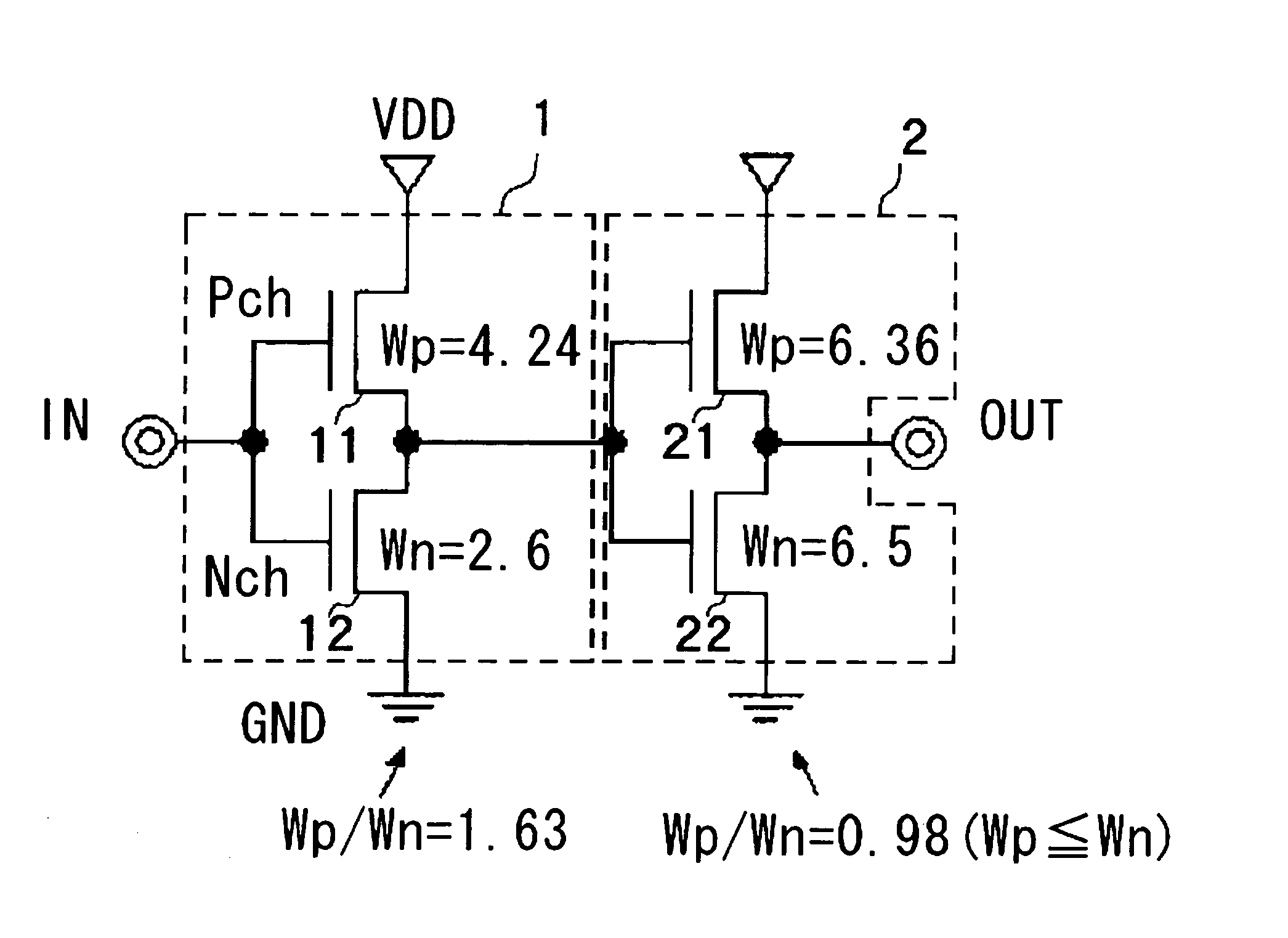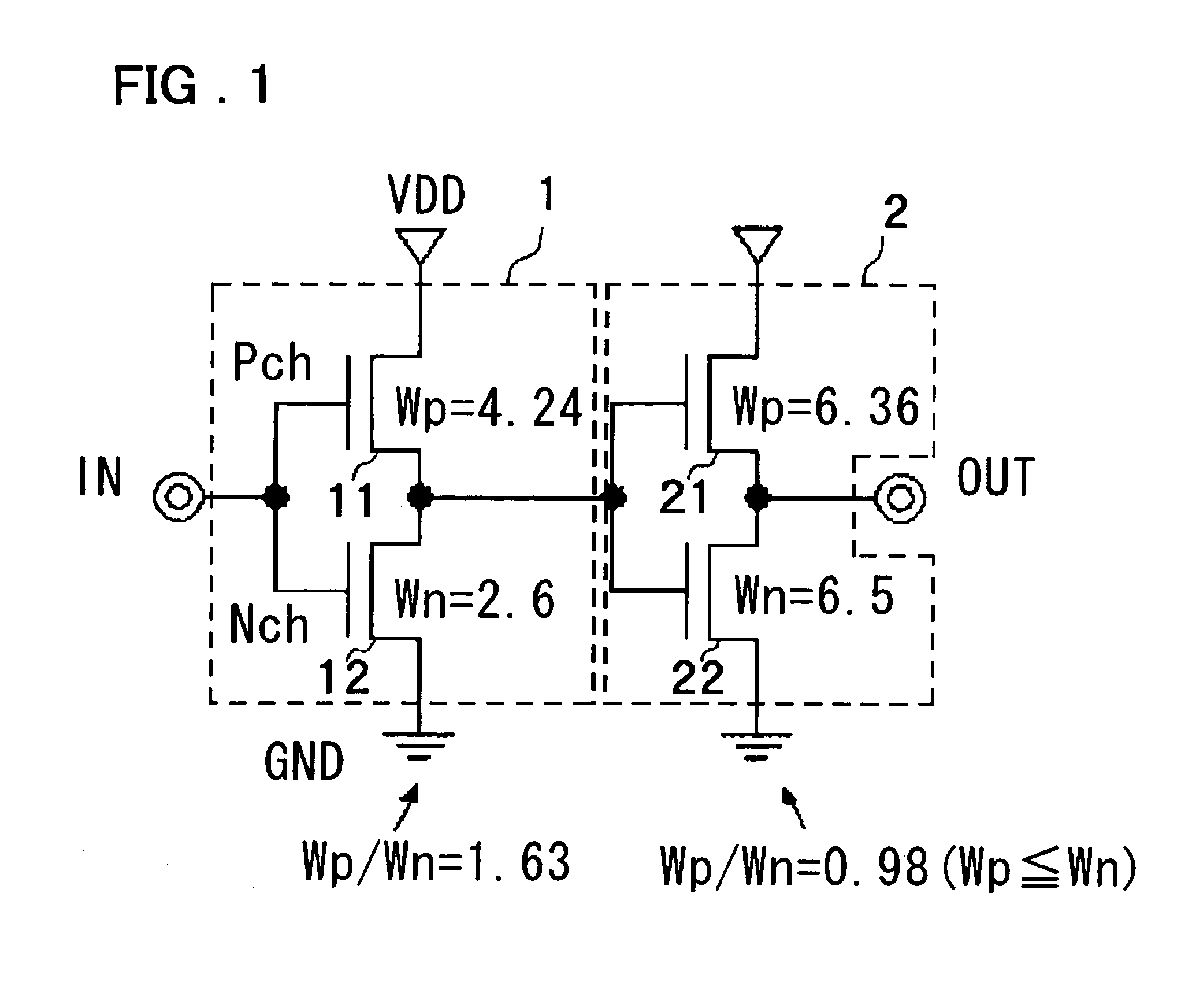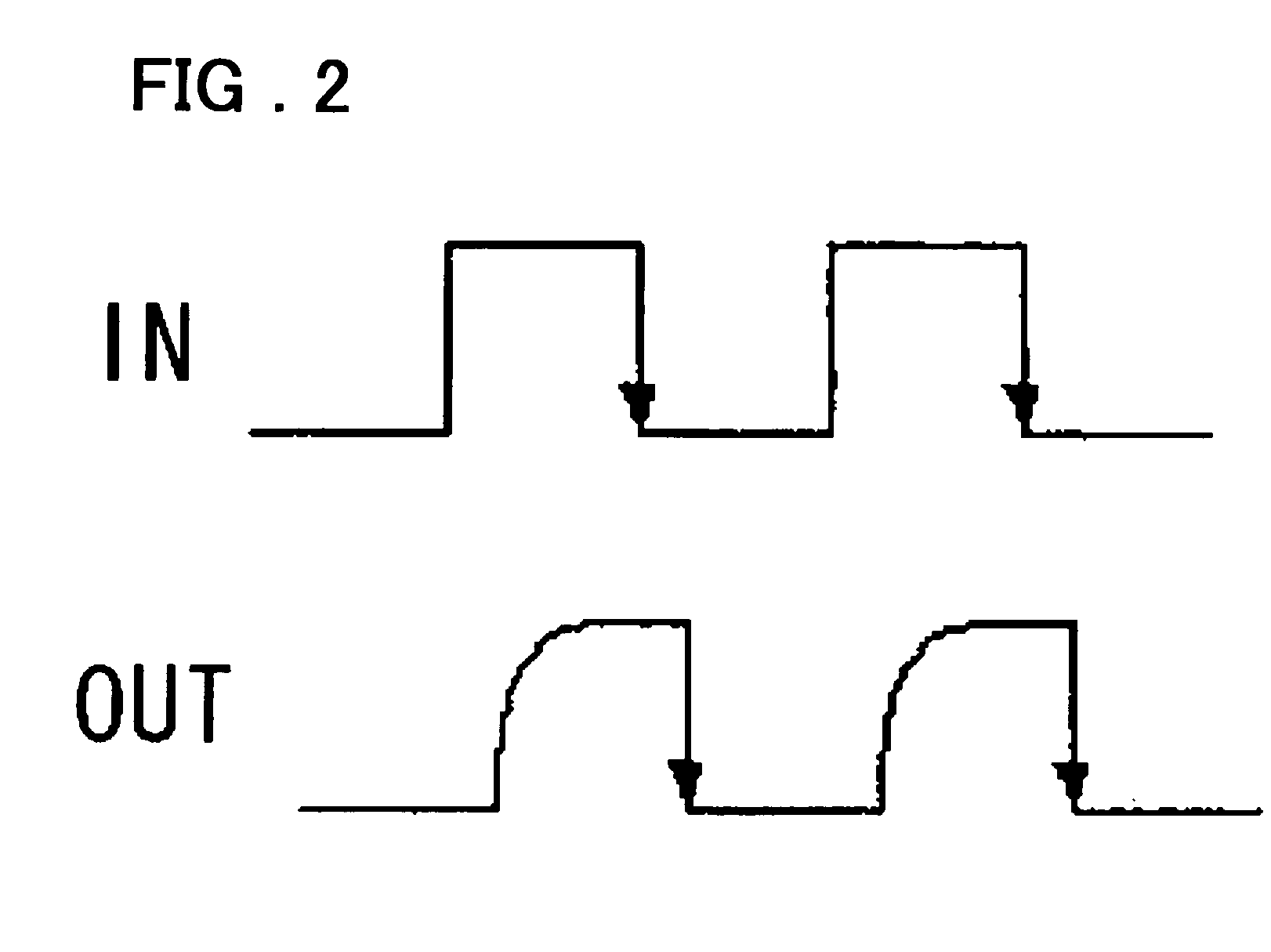Semiconductor integrated circuit device
a technology of integrated circuits and semiconductors, applied in the direction of generating/distributing signals, instruments, pulse techniques, etc., can solve the problems of increasing the number of clock buffer circuits forming the cts, cts consume more current than is necessary, and the entire semiconductor integrated circuit device consumes much more current, so as to achieve the effect of reducing the input capacity of the inverter and reducing the size of the first transistor
- Summary
- Abstract
- Description
- Claims
- Application Information
AI Technical Summary
Benefits of technology
Problems solved by technology
Method used
Image
Examples
first embodiment
(First Embodiment)
[0040]FIG. 1 is a circuit diagram showing a configuration of a clock buffer circuit provided for a semiconductor integrated circuit device according to a first embodiment of the present invention. FIG. 2 is a timing diagram showing input and output waveforms of the clock buffer circuit shown in FIG. 1. FIG. 3 is a circuit diagram showing a configuration of clock tree synthesis using the clock buffer circuit shown in FIG. 1.
[0041]The clock buffer circuit in this embodiment is configured to be applied to a clock synchronous type circuit that operates in synchronization with either of a rising edge flank or a falling edge flank of a reference clock. Each of clock buffer circuits constituting the CTS is configured to reduce its input capacity by reducing a size of a transistor for performing driving at the edge flank of the reference clock that is not used for a synchronizing operation.
[0042]As shown in FIG. 1, like a conventional clock buffer circuit, the clock buffer...
second embodiment
(Second Embodiment)
[0053]FIG. 4 is a circuit diagram showing a configuration of a clock buffer circuit provided for a semiconductor integrated 10 circuit device according to a second embodiment of the present invention. FIG. 5 is a timing diagram showing input and output waveforms of the clock buffer circuit shown in FIG. 4. FIG. 6 is a circuit diagram showing a configuration of a clock tree synthesis configuration using the clock buffer circuit shown in FIG. 4.
[0054]The clock buffer circuit in the second embodiment is configured to include a NAND gate 3 in place of the first inverter, as shown in FIG. 4.
[0055]As shown in FIG. 4, the NAND gate 3 includes a first P-channel transistor 31, a first N-channel transistor 33, a second P-channel transistor 32, and a second N-channel transistor 34. The gates of the first P-channel transistor 31 and the first N-channel transistor 33 are interconnected, and the drains of the first P-channel transistor 31 and the first N-channel transistor 33 a...
PUM
 Login to View More
Login to View More Abstract
Description
Claims
Application Information
 Login to View More
Login to View More - R&D
- Intellectual Property
- Life Sciences
- Materials
- Tech Scout
- Unparalleled Data Quality
- Higher Quality Content
- 60% Fewer Hallucinations
Browse by: Latest US Patents, China's latest patents, Technical Efficacy Thesaurus, Application Domain, Technology Topic, Popular Technical Reports.
© 2025 PatSnap. All rights reserved.Legal|Privacy policy|Modern Slavery Act Transparency Statement|Sitemap|About US| Contact US: help@patsnap.com



